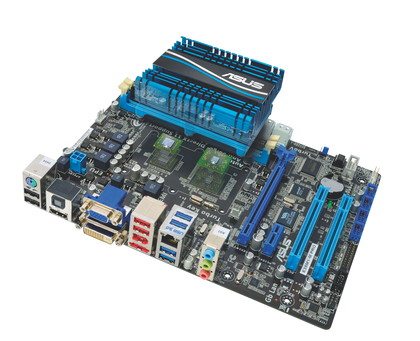Why you can trust TechRadar

So, what do we reckon about AMD's first Fusion chip?
For starters, the branding is awfully confusing. The new family of chips is known as Fusion, but this first APU actually goes by the name AMD E-350 with further models receiving similarly anonymous E and C-Series monikers.
It's a bizarrely bland naming scheme for what should be an exciting new product and it's hardly going to enthuse buyers at the point of sale.
Assuming you're not technically minded and actually understand the architectural differences, what would you go for – Intel Atom or AMD E-350?
Intel, of course, regularly commits it's own brand-related atrocities. But at least its low-power CPU has a snappy name.
The branding issue is doubly important given that there's currently so much buzz around the whole topic of Fusion processors. In theory, there are many advantages to combining a CPU and GPU on one chip and therefore creating an APU with both powerful serial and parallel data processing. One day that hypothesis will deliver tangible performance benefits.
Fusion is most definitely the future of computing.
In fact, the whole market is heading inexorably one step further than mere CPU-GPU designs – full system on a chip. But right now, the performance benefits are effectively slim to none.
It's about cost and power consumption.
In that context, the E-350 certainly looks interesting. As a desktop chip plugged into the Asus E35M1-M PRO board for an all-in price around £110, we think it's too expensive. For similar money you could pick up a cheap 760G motherboard and a massively more powerful triple-core Athlon II CPU.
As a netbook processor, however, AMD's new Fusion chip is much more promising.
OK, we're disappointed to find that Zacate's out-of-order CPU cores are only slightly quicker than those of an Intel Atom. There's still no substitute for a full-power CPU if you demand solid all round performance.
But the biggest problem with Atom has always been 2D video and here AMD's APU is a killer thanks to its full UVD3 engine.
If you're in the market for a cheap portable and want to give yourself the best shot at smooth playback of all kinds of video, whether streamed online or stored locally, AMD's new Fusion chip is an easy choice over Intel's videophobic Atom processors.
We liked:
Intel's Atom chip is great in theory.
The reality of the end user experience has always disappointed, however, and much of that is thanks to feeble graphics performance. That's precisely where AMD's E-350 APU steps in with its DirectX 11-class integrated GPU complete with 80 shader cores and more importantly the full UVD3 2D video engine.
As a CPU, the E-350 may be less than stellar, but it will put pressure on Intel and that should make for lower netbook prices for everyone.
We disliked:
We had high expectations of this Fusion processor, especially when AMD changed its initial sales pitch and suggested Fusion APUs would take aim at lower end Intel netbooks based on the Core i3 processor.
However, despite out-of-order instruction execution, the AMD E-350 is not dramatically more powerful than Atom.
As a desktop product, therefore, the E-350 and the pricey Asus E35M1-M PRO motherboard struggle to make sense. Instead, we look forward to the mobile variant of this first Fusion chip delivering netbooks with serious HD video chops.
Final word:
Little more powerful than the Intel Atom and struggles to make sense as a desktop product.
Technology and cars. Increasingly the twain shall meet. Which is handy, because Jeremy (Twitter) is addicted to both. Long-time tech journalist, former editor of iCar magazine and incumbent car guru for T3 magazine, Jeremy reckons in-car technology is about to go thermonuclear. No, not exploding cars. That would be silly. And dangerous. But rather an explosive period of unprecedented innovation. Enjoy the ride.